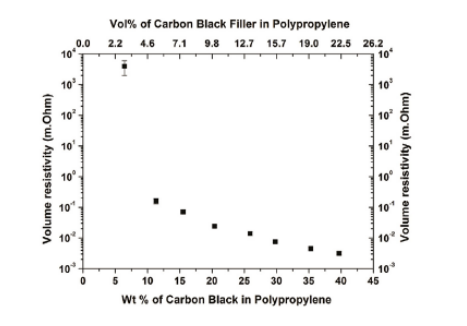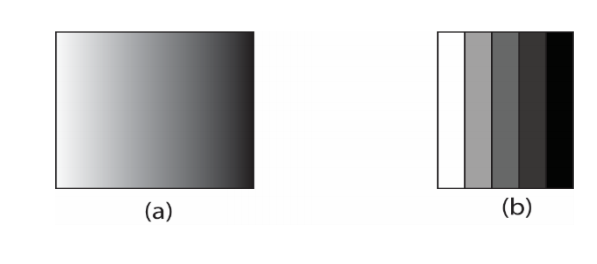In the recently published ‘Development of 3D printer for functionally graded material using fused deposition modelling method,’ researchers discuss current obstacles in the fabrication of parts and prototypes as users are so often restricted to the use of one material—making it difficult to 3D print functionally graded material (FGM). Here, the research team explains how the issue can be overcome with FDM 3D printing customizations. Using a specialized extrusion screw, the team has been able to blend the polymer matrix and filler continually during 3D printing.
This research was performed in response to a restricted number of options in materials, although metal 3D printing is a relative newcomer in terms of popularity for industrial companies around the world, featuring a wide range of composites like:
- Aluminum oxide
- Iron
- Copper
- Ceramics
- Silicon carbide
- Fibers
Mechanical properties of polymers can be greatly improved with Kevlar, along with glass and continuous carbon fiber; in fact, the researchers state the tensile strength can be increased by 6.3 times with the addition of carbon or glass.
“Similarly, tensile strength and modulus of ABS can be reinforced with carbon fiber which yielded the increase of 115% and 700% respectively. Conductive material can be formed with polypropylene (PP)-based thermoplastic composites. This material can be formed by heating and blending homopolypropylene (SCG) with carbon black using a single-screw extruder,” state the researchers.
The concept graduates further to include an FGM, a unique material as it can change according to volume—even transforming in a controllable direction, with the simplest form made up of one that changes into a continuous form, and the other into a stepwise graded structure.
“One of the famous FGM examples was compositionally graded from metal to ceramic,” stated the researchers. “Some of the useful properties of ceramics and metals can be incorporated into the FGM to achieve good wear resistance, oxidation and heat resistance, toughness, machinability and able to reduce the internal thermal stress.”
Along with the prestige of being used in reusable rocket engines, FGM is also suitable for many different applications, to include:
- Biomaterials
- Optics
- Nuclear energy
- Engineering
- Aerospace
- Chemical plant
- Electronics
- Energy conversion
- Commodities
FGM are not easy to produce through conventional methods, but 3D printing offers the perfect route via the ability to print in layers. Flexibility is still an issue though; to combat that problem, the research team built an FDM 3D printer with the flexibility to customize mixing using an embedded screw extruder, allowing the printer to use two or more materials at the same time during 3D printing, controlled through a programmable logic computer (PLC).
“In the near future, all newly developed materials can be directly used in the printing process without any issues associated to the availability of such feedstock’s filament. These changes will enable designer to perform complicated design without constraint by the manufacturing process. Biomimicry design could soon be realized with this new printing method as most of the biomimicry design such as bones, bamboos are similar to FGM,” concluded the researchers.
“Additionally, this concept is scalable as it is design based on the PLC platform used by the industry, which can be easily scaled to a larger size to accommodate large printing volumes. Overall, development of 3D printer to process FGM will be the turning point to widen the application of AM technology.”
As 3D printing processes continue to progress, there are a wide variety of new techniques for FDM 3D printing to include better speeds, along so many different composites, from carbon fiber to wood and more. What do you think of this news? Let us know your thoughts! Join the discussion of this and other 3D printing topics at 3DPrintBoard.com.

Design simulation of the (a) mixing index and (b) local shear rate at the metering zone for polymer flow within a single screw extrusion
Subscribe to Our Email Newsletter
Stay up-to-date on all the latest news from the 3D printing industry and receive information and offers from third party vendors.
You May Also Like
3D Printing Financials: Steakholder Foods Balances Losses and 3D Printed Tech Advances in 2023
A pioneer in the field of 3D printed meat and fish, Steakholder Foods (Nasdaq: STKH) disclosed its 2023 financial results, a year highlighted by technological progress but overshadowed by financial...
3D Printing Financials: Protolabs’ Q1 3D Printing Revenue is Flat, Company Advances in Technology Push
Protolabs (NYSE: PRLB) has kicked off 2024 with a mild boost in revenue, revealing how the Minnesota-based company manages to adapt and thrive even in uncertain market conditions. While the...
Supply Chain Management and the Role of 3D Printing Digital Inventories
As the additive manufacturing (AM) industry grows beyond its humble roots as a rapid prototyping technology, it has been adopted by some of the world’s leading companies to produce not...
3D Printing Financials: Materialise’s Profitability Amid Revenue Dip in Q1 2024
Materialise (Nasdaq: MTLS) has released its first-quarter earnings for 2024, highlighting a challenging quarter with some key advances despite a dip in revenue. While navigating a mixed performance across its...

































